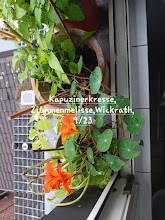dali48 and writing diary & books and photographing near spa house in BAD, 8/2010 etc.
31.10.1998 - Interpretation of dali48
Freedom is not to get what you want - but to like what you get... (Hotei)
Loneliness! - This is also joy: Autumn evening... (Buson)
Life is what happens to us - while we are forging other plans... - Concentrated at the moment, how refreshing that is! - And how loosening for all prejudices and inhibitions. - We can not live yesterday or tomorrow, or even in the next minute - but unlike the heron, we still live on a different level, the level of words, and on it we can imaginatively project into the past or future (see thoughts, memories, ideas, visions and dreams etc. - d.48)...
Silvergrass fronds / trembling in every air breathe - lonely heart... (Issa)
Do not confuse religious symbols with what they symbolize - Do not take the mirror image of the moon for the moon! - A Zen man, on the other hand, feels as part of nature and sees life as a dance - as a joyous and spontaneous movement... - You can enjoy everything you want to enjoy. What to do? - Laugh! - Curse! - Write a haiku (see poem - d.48). And go on...
A full moon: On the rice trunk (see tadami - d.48) / fall pine shadows... (Kikaku)
While she washes the rice, her smiling face is briefly lit by a firefly... (unknown Haiku poet)
The heavy leaf falls from its own drive / on this quiet, windless day... (Boncho)
In short, the world of each individual is different - from the world of each other person... (Holmes / Horioka)
Golden Snow Zen, Nature, and Dance, most important in our lives, they slow us to enjoy the good things in life, they make us smile.
Hotei. One of Japan's Seven Lucky Gods. Laughing Buddha with the Big Belly. ... History & Timeline .... A semi-legendary itinerant 10th-century Buddhist monk who became a popular subject in Chinese and Japanese ink painting. His real name is said to have been Qici 契此 (Jp. = Keishi), whose biography is found in the ...
There is a cosmic loneliness and grandeur to the man Basho. ... work of Yosa Buson and the concept of “late style” begins with a brief biography of Buson's early ...
Haiku (jap. 俳句; Plural: Haiku, auch: Haikus) ist eine traditionelle japanische Gedichtform, die ... Japanische Samurai und Zen-Mönche schrieben Todesgedichte (jisei no ku), ... Große Haiku-Dichter waren zudem Buson und Kobayashi Issa.
Takarai Kikaku (Japanese: 宝井其角; 1661–1707) also known as Enomoto Kikaku, was a Japanese haikai poet and among the most accomplished disciples of ...
Nozawa Bonchō (野沢 凡兆, 1640–1714) was a Japanese haikai poet. He was born in ... The Haiku and Poems of Nozawa Bonchō · Downtown at the Wayback
Die Seite beschreibt die Ästhetik des japanischen Zen Buddhismus, bzw. die klassische ... Holmes, Stewart W. & Horioka, Chimyo (1994): Tuschespuren in der ... http://de.wikipedia.org/ wiki/Japanische_Ästhetik (Seite von Wikipedia über die



Keine Kommentare:
Kommentar veröffentlichen